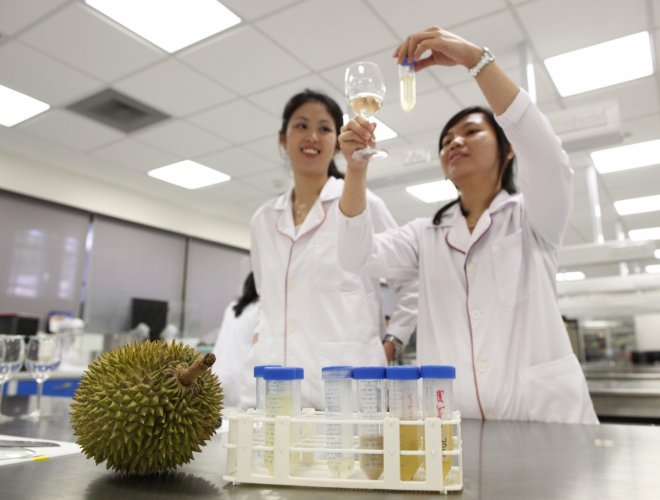
Singaporean scientists in collaboration with other renowned international experts have achieved a world's first of its kind by decoding the complete genetic map of durian, a highly prized tropical fruit delicacy known in Asia as the "king of fruits". The Singaporean team's efforts were backed by their innate scientific curiosity and their love for the fruit.
"Being a geneticist, I was naturally curious about the Durian genome- what gene causes its pungent smell? How did its spiny husk arise?" said lead author Teh Bin Tean, Deputy Director of the National Cancer Centre Singapore.
The Singaporean team in collaboration with other experts used state-of-the-art sequencing platforms to map the genome of a certain durian variety called Musang King ("Mao Shan Wang" in Chinese). This particular fruit has an exceptionally delicate texture with a pungent smell. It is regarded as the king of kings in the local durian world.
After the thorough study on this fruit, the team's analysis revealed that durian genome comprises approximately 46,000 genes where are almost double than human, who have nearly 23,000 genes.
Keeping that newly generated genome data as the firm based idea, the team moved forward to study even the evolution of durian and traced its relationship 65 million years back to the cacoa plant, which produces chocolate.
Scientists have dealt with the million-dollar question as to what actually causes the durian's stinking odour? After comparing gene activity patterns from different parts of the durian plant, including leaves, roots and ripening fruits, the team identified the classification of the gene called MGLs (methionine gamma lyases) which regulate the production of odour compounds called volatile suffer compounds (VSCs).
"Our analysis revealed that VCS production is turbocharged in durian fruits, which fits with many people's opinion that durian smell has a "sulphur" aspect," said Patrick Tan, a professor from Duke-NUS Medical School.
Researchers assumed that the ability of durians to produce high levels of VSC and a notorious smell might be important for them to attract wild animals to eat them and spread its seeds to other parts of the region.
The technological expertise developed by the scientist might also be used in other related plants especially those plants which have a medicinal value.
"This is a long and distinguished history of medicines being discovered from plants. The best example is Taxol, the well-known drug used for treating breast cancer, and it is originally derived from the bark of the Pacific yew," said Soo Khee Chee, Director of the National Centre Singapore.
Besides the particular durian species (Durio zibethenus) sequenced in this study, the team said there are nearly 25 other species in nature, some of them are edible and some are not.
"Although multi-durian species are found in this part of the world, sadly, most of them are endangered due to the increasing loss of biodiversity. DNA sequencing is thus an important tool to protect the precious information contained in these fascinating and important plants," said Teh.
The team has donated the durian genome data to the National Parks Board, where they hope to spur further durian research and its knowledge in Singapore.









